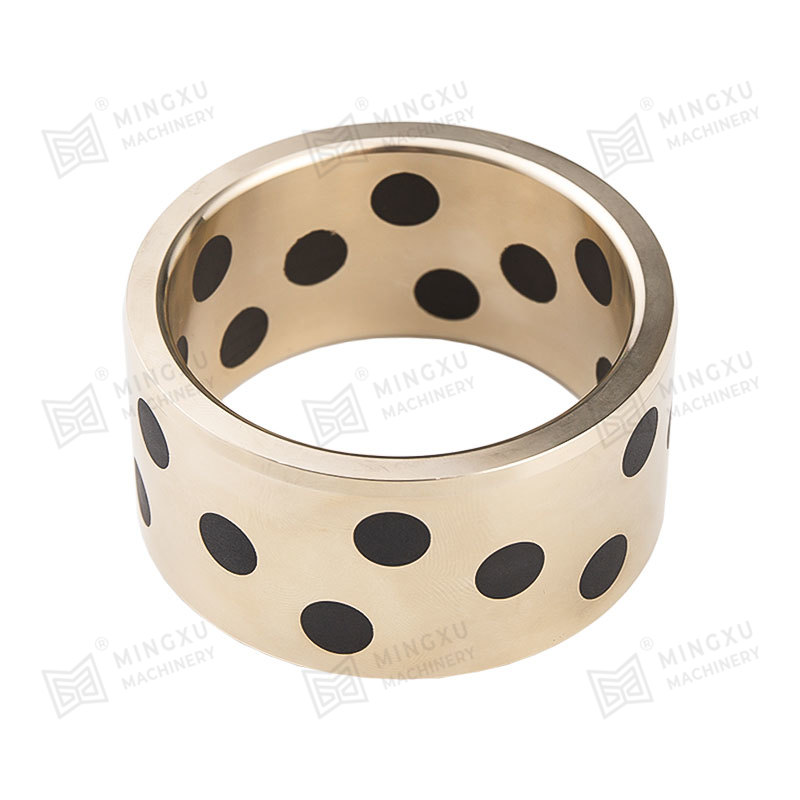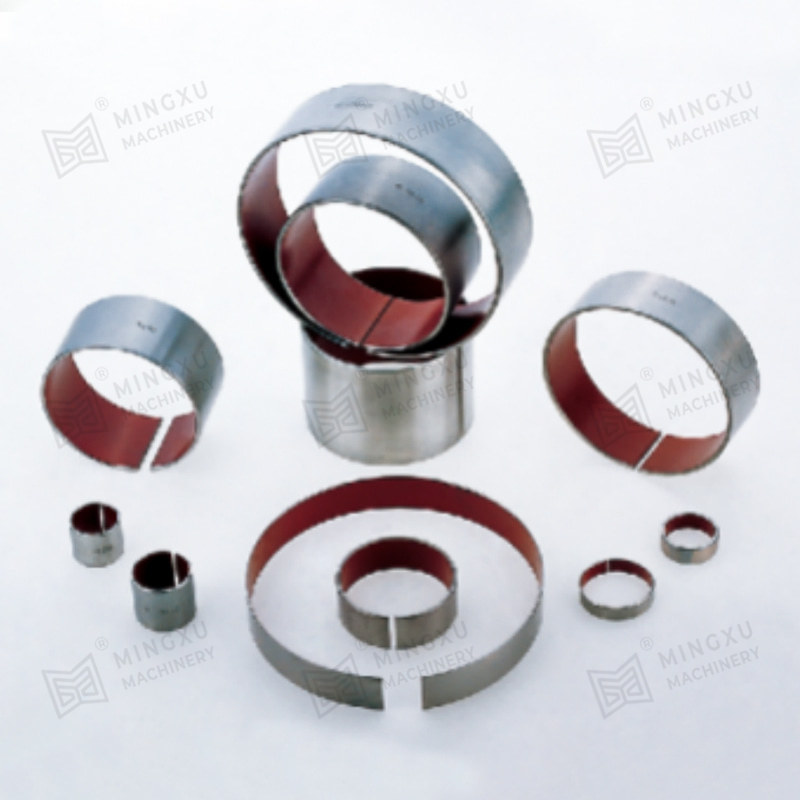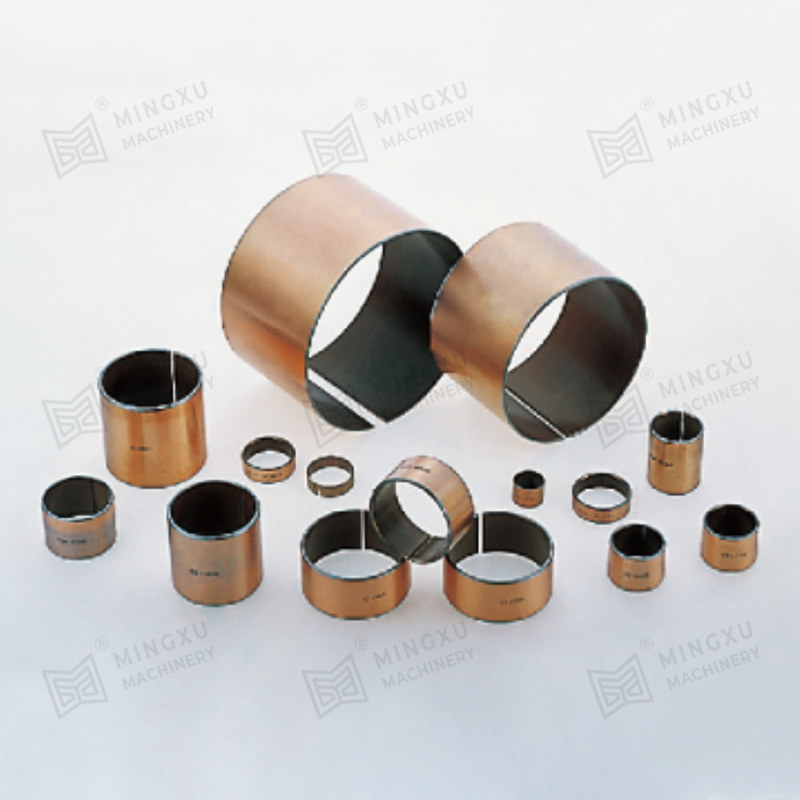MXB-JFFB Self-Lubricating Half Bearing
Cat:Self-Lubricating Bearing
MXB-JFFB self-lubricating half bearings refer to bearings that cover only half of the circumference of a shaft or axle, providing support and reducing...
See DetailsThe clearance fit between the mechanical bushing and shaft significantly impacts performance and longevity in several ways. Here's a detailed breakdown:
Performance Impacts
Friction and Wear:
Reduced Friction: An appropriate clearance fit minimizes friction between the bushing and shaft, allowing for smoother rotation and reduced energy loss.
Wear Resistance: A tight clearance fit can lead to excessive wear due to metal-to-metal contact, while too much clearance can result in vibration and impact wear. An optimal fit balances these factors to prolong component life.
Rotational Accuracy and Stability:
Stability: A precise clearance fit ensures stable and precise rotation of the shaft within the bushing, reducing vibration and noise.
Accuracy: It maintains the desired alignment and positioning of the shaft, critical for applications requiring high accuracy, such as precision machinery and equipment.

Efficiency:
Energy Loss: A well-designed clearance fit minimizes energy loss due to friction, improving the overall efficiency of the system.
Power Transmission: Efficient power transmission is achieved by minimizing resistance and allowing the shaft to rotate smoothly within the bushing.
Longevity Impacts
Fatigue Resistance:
An optimal clearance fit helps distribute loads evenly, reducing stress concentrations that can lead to fatigue cracks and premature failure.
It minimizes vibrations that can cause cyclic loading and accelerate fatigue damage.
Wear Life:
Extended Wear Life: As mentioned earlier, a balanced clearance fit reduces wear rates, thereby extending the service life of both the bushing and shaft.
Lubrication: Proper clearance also aids in the effective distribution of lubricant, further reducing wear and enhancing longevity.
Maintenance and Replacement Costs:
Reduced wear and extended component life translate into lower maintenance costs and fewer replacements, improving the overall cost-effectiveness of the system.
The clearance fit between a mechanical bushing and shaft plays a crucial role in determining performance and longevity. An optimal fit minimizes friction, wear, and vibration while maximizing rotational accuracy, stability, and efficiency. It also enhances fatigue resistance, extends wear life, and reduces maintenance costs. Designing and selecting the appropriate clearance fit requires careful consideration of the specific application requirements, operating conditions, and material properties.

MXB-JFFB self-lubricating half bearings refer to bearings that cover only half of the circumference of a shaft or axle, providing support and reducing...
See Details
MXB-JDBUF self-lubricating casting bronze bearings combine the advantages of self-lubricating and flange design. The raw materials are made of high-qu...
See Details
The MXB-DUF oil-free composite bearing, also known as the SF-1F bushing, is a three-layer composite structure bearing. It typically consists of a stee...
See Details
MXB-JOLP self-lubricating wear plates have good self-lubricating properties and require no external lubrication. This product has good load-bearing ca...
See Details
MXB-JTLP self-lubricating wear-resistant plate can provide standard products ranging from width from 18mm to 68mm and length from 100mm to 220mm. It c...
See Details
MXB-JSOL self-lubricating guide rail is an L-shaped guide groove type self-lubricating guide rail, which is made of a combination of high-strength bra...
See Details
Constructed from high-grade graphite-copper alloy, the MXB-JSL L-type self-lubricating guide rail is strategically installed at the mold clamping guid...
See Details
MJGBF oil-free injection guide bushings are components used in the plastic injection molding process to further improve manufacturing efficiency by en...
See Details
SF-1S stainless steel corrosion-resistant bearing is a very effective corrosion-resistant material that is formed by rolling with stainless steel as t...
See Details
SF-1P reciprocating bearing is a novel formula product designed based on the structure of SF-1X material and according to the special common condition...
See Details
Contact Us